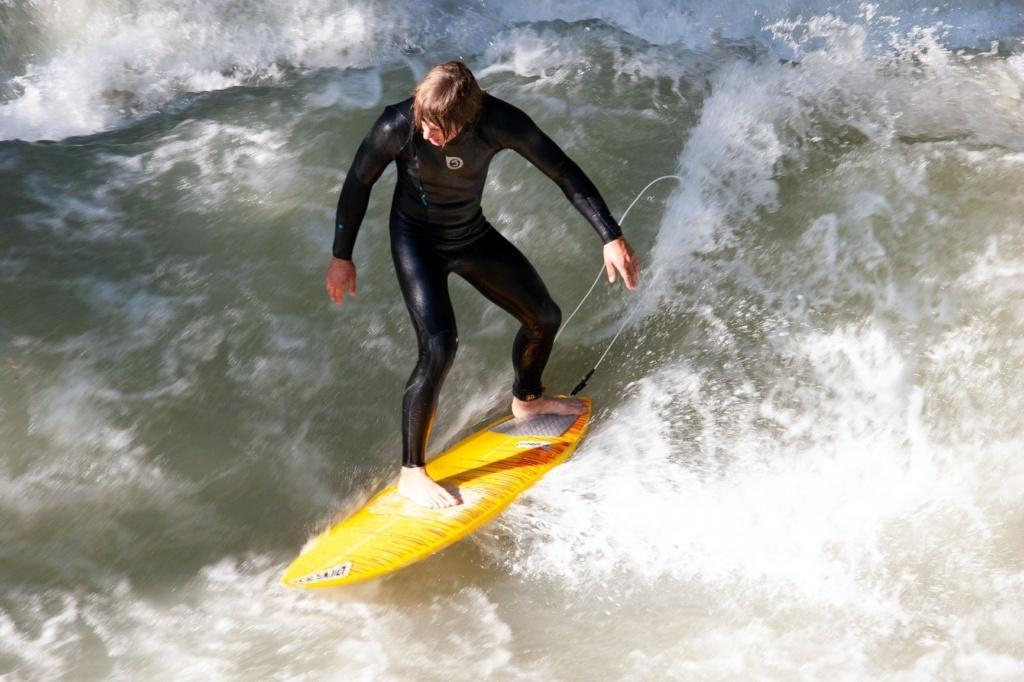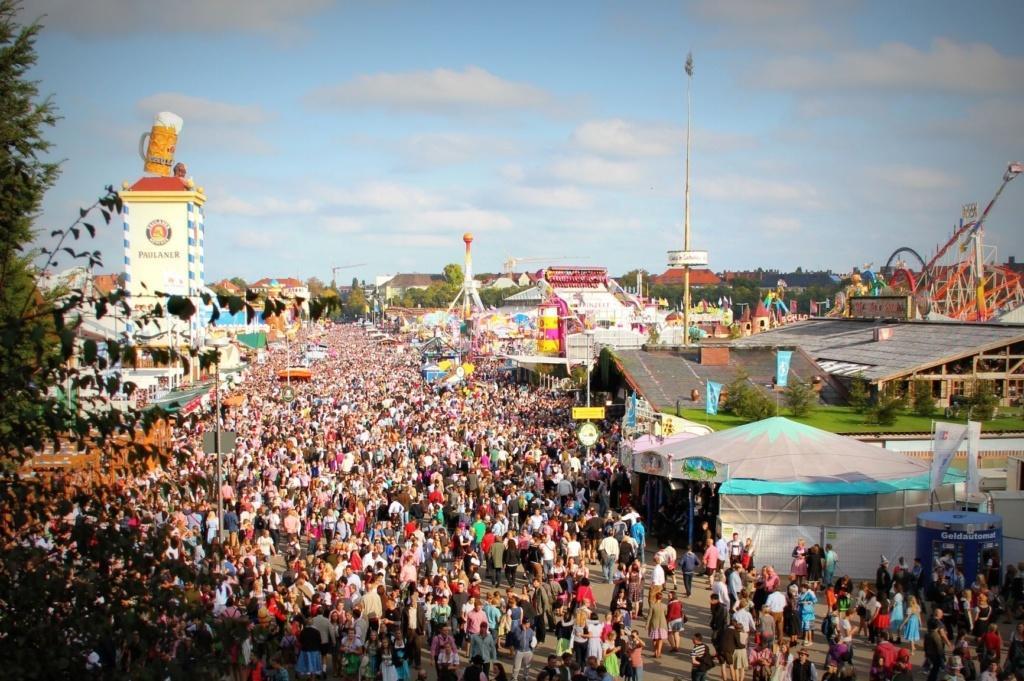We travel to Munich quite often. Or at least we did before the Coronavirus hit. Munich is in Bavaria, and Bavaria is where friends and family live and work. Munich is a wonderful place to explore.
For a place that is steeped in traditions, Munich really has a lot of modernity going on. Munich is the third-largest city in Germany and is one of the biggest centers of tourism in the country. Much of the city center in Munich mostly resembles as it did back in the 17th century the iconic Frauenkirche marking the city’s skyline. Munich has been around for even longer than that, however, with the first mentionings of the city noted in a document dating back to 1158. Fast forward to 1806 and Munich becomes the stately capital of the Kingdom of Bavaria and that’s where the city’s grandeur really took off. Becoming a hub of baroque art, extravagant palaces, castles, and art from Richard Wagner’s operas to architectural marvels.
After the Second World War, the city retained most of its old-world charm while simultaneously welcoming the new. The grand palaces of Neuschwanstein and the Royal Residence were rebuilt while modern innovation and tech thrived with businesses like BMW, sports teams like Bayern Munich FC were world-renowned, and modern art museums opened to great acclaim.
Munich is really a city that contrasts, it’s old and new, it’s modern but still traditional. It has everything from art and science, to old-school Bavarian beer halls. It’s got a little something for everyone.
Check out the Neues Rathaus
When you arrive in a new city, typically the first thing to do is get acquainted with it. Located in the quite literal heart of the city, Neues Rathaus almost has its own center of gravity, since once you get there, it’ll feel like you’re in the bustling epicenter of everything going on. The building is located in the Marienplatz area and is hard to miss. Make your way through the crowds of people and tourists and take a second to gander at the absolute monolithic Gothic Revival building.
The building itself is used as a town hall and is mostly home to administrative workers and offices but the ornate facade is over 100 meters long and has 400 rooms. It is festooned with spires, arches, and the four statues of the Bavarian Kings. One of the biggest draws to it is also the Glockenspiel. Since 1908, the large tower cuckoo-clock at 11, noon, and 5 pm with automatons acting out Bavarian tales from the 1600s.
For the traveler on a budget, be sure to check out the creepily Gothic courtyard and the open memorial room which reminisces on those who died in both world wars.
Munich is a great old city with some magnificent architecture. It is a great destination all year. Kati loves the spring and summer. I love the winter and Christmastime.
Explore Englischer Garten
Located right in the heart of the city, the Englischer Garten is a massive green space created in the 18th century on the left bank of the Isar River. The park starts at the Residenz and seemingly just goes on forever. The park was part of the official royal home until it was opened to the public and now this 914-acre park is one of the world’s largest urban green spaces overtaking New York City’s Central Park in size. The large expanse of lawns, lakes, and the river brings in tourists and locals alike. Explore the little nooks and crannies of the park like the Japanese tea houses added for the 1972 Olympics or the Chinese tower erected in 1790 (and the site of a beer garden). The Isar runs through the area and in the heart of the summer months, people enjoy hanging out by the banks of the river, having a picnic, and possibly do a little naked sunbathing. It’s uncommon to see nor is it uncommon to see people hop in the water and float down the river once they get enough of the heat of the summer sun.
Go Surfing
You might think that landlocked Munich is a weird place to go surfing but the city is home to one of the few places around where “urban surfing” is a thing. Located on the edge of the Englischer Garten is a little spot where water from the river thunders out from under a bridge and creates a constant wave. Special boards are sold around Munich shops and unlike traditional surfing, surfers don’t have to wait to catch a wave, so they basically just hop on the board and get going. Would-be surfers wait patiently for their turn to ride the wave and no matter what time of the year it is, you’ll always find someone hopping on the water. Whether it’s the dead of winter or the heat of summer. The activity brings in professional surfers, amateurs, and plenty of watchers.

Yes, you can even go surfing in Munich.
Asamkirche
Walking through the gates past Sendlinger, the view is like any other city. Shops and apartments line the streets and there are people walking by the buildings but sandwiched between two ordinary buildings is the Asamkirche.
Built between 1733 and 1746 the church is officially called the “Church of St. Johann Nepomuk” but is colloquially known as Asamkirche. The church was built by the Asam brothers as a private chapel and because it wasn’t open to the public the brothers were able to build it in any fashion they saw fit. To say that the church is ornate is understating it. The baroque facade is integrated into the houses along Sendlingerstrasse but looking at it from up close you’ll notice the large, dark, heavy, and carved door along with a gilded sculpture of death with scissors cutting the thread of life. The concept of light is used expertly in the relatively small space with directed light illuminating the three figures of the trinity. Frescoes, mosaics, and gold trimmings cover every corner of the small church. Despite the overwhelming amount of things going on, it still manages to look cohesive with the space divided into three sections each section representing something different.
The church is considered one of the most important baroque buildings in Southern Germany. The small church was so ornate and fabulous that despite the fact that it was created for the private use of the Asam brothers, the public wanted in and it’s been open to everyone ever since.
Drink a lot of Beer
Germans are known throughout the world for being prolific beer drinkers. Beer connoisseurs out there might know of the “German beer purity law” which is a law that makes sure German beer is brewed to a certain specification and many more out there might be familiar with Oktoberfest. Countries around the world in every continent have their own versions of Oktoberfest but the original and biggest is found here in Munich. But if you’re not here during the time Oktoberfest is taking place, hanging out at a beer hall is a fun time for locals and tourists alike.
Beer Halls and Beer Gardens: When it comes to beer, Munchners don’t mess around. There are six breweries in the city limits with some smaller minor ones in the outlying areas, but it is essentially a law that there are only six breweries allowed within the Munich city limits. Those six are: Augustiner, Hacker-Pschorr, Hofbräu, Löwenbräu, Paulaner, Spaten-Franziskaner. Out of those six, each offers variations like Helles, Dunkles, Weissbier, Weissbier Dunkle, and occasionally a Bock.
When it comes to visiting a beer hall, you can’t get much more Bavarian. Every brand of Munich beer has its own beer hall/garden which is essentially a giant restaurant serving the beer straight from the tap. This is where you can come to experience the best of classic Bavarian cuisine and beer hall culture. Typically people don’t go there alone and tables are large and meant to seat multiple people so sitting next to strangers is a given and part of the experience, so don’t be afraid to make new friends. Many halls also have live oompah music and your choice of beer size is either a half-liter or a liter (known as a Maß).
Drinking a cold beer on a hot summer’s day is an internationally renowned activity and the Bavarians basically perfected it. On top of the beer halls, in the summer months, the breweries also have outdoor spaces where the idea essentially remains the same as beer halls. Moreover, public beer gardens can also be found throughout the city. For example, in the Englischer Garten, there are two beer gardens, and several others can be found outside of brewery grounds as well. Expect an eclectic mix of people visiting beer gardens from locals and tourists, to blue-collar workers, white-collar, families, straight, gay, and just about everyone else. It’s not uncommon to see kids with their parents or even dogs hanging out with their owners.
Oktoberfest: Oktoberfest brings all the fun and excitement of beer halls and gardens and amplifies it to a two-week-long ordeal. The first one took place in October 1810 to celebrate the marriage of Prince Ludwig of Bavaria and Princess Therese of Sachsen-Hildburghausen. All citizens of the city were invited and year after year it grew, though it was only in 1896 that the iconic massive beer tents were brought in. An average of 7 million people from around the world come to celebrate and drink around 7 million liters of beer.
The six breweries all have their own tents and gardens but be aware that getting a seat at a table can be tricky and many people on opening day and the weekends come as early as 6 am to get a seat and drinking only starts at 10 am. Opening day and the weekends are the most debaucherous ones with Tuesdays being “family day” and most locals favor going during a weekday to avoid the massive crowds.

Octoberfest tends to get a bit crowded.
Take a dip at the Müller´sches Volksbad
One of old Munich’s beautiful art-Nouveau buildings currently stands as a bit of an oddity in the modern world but an interesting place to visit nonetheless. Originally opened in 1901, the building was an ornately decorated public pool. Feature the newest architectural styles of the time the art-Nouveau building features baroque elements, stucco finishes, bronze statues, and iron gates. The pool was once the most beautiful and grand in Europe and has had some additions over the years like a Roman-style steam bath and a Finnish sauna with colorful lights. Taking a dip will only cost you about €5 and again don’t be surprised to see some naked people enjoying the facilities.
Take a defiant stroll down Viscardigasse
Munich was the unfortunate center of the Nazi party during Hitler’s rise to power. After the failed Beer Hall Putsch that got Hitler arrested along with the deaths of 4 policemen and 16 Nazi marchers in front of the Feldherrnhalle Hitler made the monument a national landmark. It became a symbol of the movement and two officers were even posted in front of it requiring anyone who walked by to give a Nazi salute.
The Viscardigasse provided an alternate route around for those who refused to show their support. The narrow alleyway provided a way around the monument that allowed people to passively resist and the pedestrian-only alley has a little trail of bronze-paved bricks commemorating the brave that refused to give in to giving Hitler the satisfaction of a salute.
Our Final Word
Munich is a city that offers a ton of amazing things to see and do. It keeps its Bavarian traditions alive and thriving while not being afraid to be something new and modern entirely. Relax in the massive green spaces, try the local beer, or go swimming naked. There’s lots of fun in this old town.

